It’s hard to believe but Autocade is four years old this month. In fact, its actual birthday was some time last week.
It’s been busy at work, so Autocade has received a little less attention in the last 12 months, though things were buoyed when Keith Adams (of AROnline) added a whole bunch of models. It’s also about to cross the two million-page view barrier.
When I look back at the previous year, we’ve added a lot of Chinese models, for the simple reason that China is where most of the new-model activity is these days. There are a lot of translation issues, but Autocade may be one of the only references in English to the more obscure vehicles coming out from behind the Bamboo Curtain.
Still, there are some oddities from other countries that have appeared over the last 12 months, including a Ford made by Chrysler, and a Hillman Hunter with a Peugeot body (kind of). Here they are, for your entertainment.
 Changcheng Phenom (長城 凌傲/长城 凌傲). 2010 to date (prod. unknown). 5-door sedan. F/F, 1298, 1497 cm³ (4 cyl. DOHC). Supermini that looked to all the world like a Toyota Vitz (P90) with an ugly grille, with the same wheelbase. Essentially a clone, though interior changed over Toyota version. Even Chinese media noted the similarity to the Vitz at the rear, but did not find the grille distasteful. Engines of Changcheng’s own design, with decent performance from the 1·5.
Changcheng Phenom (長城 凌傲/长城 凌傲). 2010 to date (prod. unknown). 5-door sedan. F/F, 1298, 1497 cm³ (4 cyl. DOHC). Supermini that looked to all the world like a Toyota Vitz (P90) with an ugly grille, with the same wheelbase. Essentially a clone, though interior changed over Toyota version. Even Chinese media noted the similarity to the Vitz at the rear, but did not find the grille distasteful. Engines of Changcheng’s own design, with decent performance from the 1·5.
 Chrysler GTX. 1968–9 (prod. unknown). 4-door sedan. F/R, 2414 cm³ (V8 OHV). Performance version of Esplanada, with go-faster stripes, apeing US imagery. Filled the gap of the earlier Rallye and Tufao in the Chambord series, which had been missing since the Regente–Esplanada took over in 1966. Offered only till the platform was finally retired in favour of the A-body cars from the US.
Chrysler GTX. 1968–9 (prod. unknown). 4-door sedan. F/R, 2414 cm³ (V8 OHV). Performance version of Esplanada, with go-faster stripes, apeing US imagery. Filled the gap of the earlier Rallye and Tufao in the Chambord series, which had been missing since the Regente–Esplanada took over in 1966. Offered only till the platform was finally retired in favour of the A-body cars from the US.
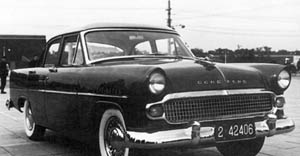 Dongfeng (东风/東風) CA71. 1958 (prod. 30). 4-door sedan. F/R, 2000 cm³ approx. (4 cyl. OHV). First passenger car built by First Automobile Works of China, with bodyshell and interior apeing Simca Vedette (1954–7) and 70 bhp OHV engine based around a Mercedes-Benz 190 unit and chassis. Self-designed three-speed manual transmission. Laboriously built, as China lacked the facilities, and bodies were not cast but beaten to the right shape. Initially badged with Latin letters before Chinese ones replaced them on the order of the Central Committee. Used for propaganda, and Mao Tse Tung even rode in one around launch time, but faded into obscurity after 30 examples.
Dongfeng (东风/東風) CA71. 1958 (prod. 30). 4-door sedan. F/R, 2000 cm³ approx. (4 cyl. OHV). First passenger car built by First Automobile Works of China, with bodyshell and interior apeing Simca Vedette (1954–7) and 70 bhp OHV engine based around a Mercedes-Benz 190 unit and chassis. Self-designed three-speed manual transmission. Laboriously built, as China lacked the facilities, and bodies were not cast but beaten to the right shape. Initially badged with Latin letters before Chinese ones replaced them on the order of the Central Committee. Used for propaganda, and Mao Tse Tung even rode in one around launch time, but faded into obscurity after 30 examples.
 Dongfeng Fengsheng (東風風神/东风风神) A60. 2011 to date (prod. unknown). 4-door sedan. F/F, 1997 cm³ (4 cyl. DOHC). Uglified version of Nissan Bluebird Sylphy (G11) on a Renault Mégane II platform, developed for Chinese market by Dongfeng. Basically the Sylphy with the Dongfeng grille grafted on it, with production commencing December 2011 for 2012 sale.
Dongfeng Fengsheng (東風風神/东风风神) A60. 2011 to date (prod. unknown). 4-door sedan. F/F, 1997 cm³ (4 cyl. DOHC). Uglified version of Nissan Bluebird Sylphy (G11) on a Renault Mégane II platform, developed for Chinese market by Dongfeng. Basically the Sylphy with the Dongfeng grille grafted on it, with production commencing December 2011 for 2012 sale.
 Emme Lotus 420/Emme Lotus 422/Emme Lotus 422T. 1997–9 (prod. approx. 12–15). 4-door sedan. F/F, 1973, 2174 cm³ (4 cyl. DOHC). Very obscure Brazilian luxury car, built on Lotus principles of lightness, with early Lotus Esprit engines. T model denoted turbocharging. Claimed 87 per cent of components locally sourced. Manufacturing techniques with advanced materials not particularly refined, leading to questionable build quality. Little known about the vehicle, but it faded without trace after currency changes in the late 1990s.
Emme Lotus 420/Emme Lotus 422/Emme Lotus 422T. 1997–9 (prod. approx. 12–15). 4-door sedan. F/F, 1973, 2174 cm³ (4 cyl. DOHC). Very obscure Brazilian luxury car, built on Lotus principles of lightness, with early Lotus Esprit engines. T model denoted turbocharging. Claimed 87 per cent of components locally sourced. Manufacturing techniques with advanced materials not particularly refined, leading to questionable build quality. Little known about the vehicle, but it faded without trace after currency changes in the late 1990s.
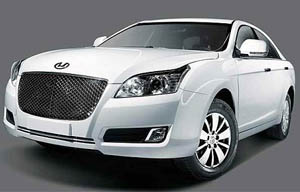 Hawtai (華泰/华泰) B11. 2010 to date (prod. unknown). 4-door sedan. F/F, 1796 cm³ petrol, 1991 cm³ diesel (4 cyl. DOHC). Ugly first attempt by former Hyundai affiliate at its own sedan, using Roewe 550 engine. Media centre with sat-nav and entertainment perhaps one of its few stand-outs. Petrol model first off the line in late 2010; diesel followed soon after.
Hawtai (華泰/华泰) B11. 2010 to date (prod. unknown). 4-door sedan. F/F, 1796 cm³ petrol, 1991 cm³ diesel (4 cyl. DOHC). Ugly first attempt by former Hyundai affiliate at its own sedan, using Roewe 550 engine. Media centre with sat-nav and entertainment perhaps one of its few stand-outs. Petrol model first off the line in late 2010; diesel followed soon after.
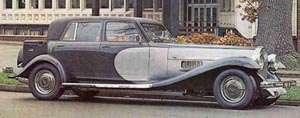 Panther De Ville. 1974–85 (prod. 60 approx.). 4-door saloon, 2-door coupé, 2-door convertible, 6-door limousine. F/R, 4235 cm³ (6 cyl. DOHC), 5343 cm³ (V12 OHC). Panther creates a new flagship to sit about its original J72 model, based around Jaguar XJ mechanicals. A pastiche of the Bugatti Royale, creator and “car couturier” Robert Jankel targeted his De Ville at the nouveaux riches, and they found homes with the likes of Elton John. Lavish, though never as quick as the Jaguars due to the weight and poor aerodynamics. Humble bits included BMC “Landcrab” doors. Cars were custom-made and De Ville was usually the most expensive car on the UK price lists. Few redeeming features other than exclusivity; caught on to the 1930s retro craze that seemed to emerge in the 1970s.
Panther De Ville. 1974–85 (prod. 60 approx.). 4-door saloon, 2-door coupé, 2-door convertible, 6-door limousine. F/R, 4235 cm³ (6 cyl. DOHC), 5343 cm³ (V12 OHC). Panther creates a new flagship to sit about its original J72 model, based around Jaguar XJ mechanicals. A pastiche of the Bugatti Royale, creator and “car couturier” Robert Jankel targeted his De Ville at the nouveaux riches, and they found homes with the likes of Elton John. Lavish, though never as quick as the Jaguars due to the weight and poor aerodynamics. Humble bits included BMC “Landcrab” doors. Cars were custom-made and De Ville was usually the most expensive car on the UK price lists. Few redeeming features other than exclusivity; caught on to the 1930s retro craze that seemed to emerge in the 1970s.
 Peugeot RD 1600/Peugeot Roa. 2006 to date (prod. unknown). 4-door saloon. F/R, 1599, 1696 cm³ petrol, 1599 cm³ CNG (4 cyl. OHV). The Rootes Arrow lives on, but with a Peugeot 405 clone bodyshell. Basic model offered by IKCO of Iran, blending the platform of the obsolete rear-wheel-drive Paykan with a more modern interior and exterior. Initially offered with 1·6 petrol and CNG engines; G2 model from 2010 has 1·7 unit.
Peugeot RD 1600/Peugeot Roa. 2006 to date (prod. unknown). 4-door saloon. F/R, 1599, 1696 cm³ petrol, 1599 cm³ CNG (4 cyl. OHV). The Rootes Arrow lives on, but with a Peugeot 405 clone bodyshell. Basic model offered by IKCO of Iran, blending the platform of the obsolete rear-wheel-drive Paykan with a more modern interior and exterior. Initially offered with 1·6 petrol and CNG engines; G2 model from 2010 has 1·7 unit.
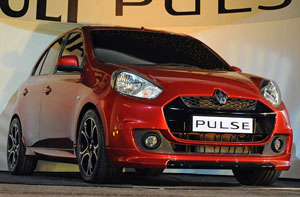 Renault Pulse. 2011 to date (prod. unknown). 5-door sedan. F/F, 1461 cm³ diesel (4 cyl. OHC). Nissan March (K13) with a nose job, aiming at the premium compact sector in India, expecting to form the bulk of the company’s sales there. Designed by Renault staff in Mumbai. Largely identical under the skin, with diesel at launch, petrol models following later.
Renault Pulse. 2011 to date (prod. unknown). 5-door sedan. F/F, 1461 cm³ diesel (4 cyl. OHC). Nissan March (K13) with a nose job, aiming at the premium compact sector in India, expecting to form the bulk of the company’s sales there. Designed by Renault staff in Mumbai. Largely identical under the skin, with diesel at launch, petrol models following later.
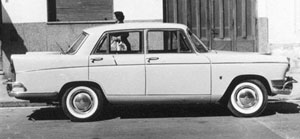 Siam Di Tella 1500. 1959–66 (prod. 45,785 sedan, 1,915 Traveller). 4-door sedan, 5-door wagon. F/R, 1489 cm³ (4 cyl. OHV). Licensed Argentinian version of Riley 4/68 but with Traveller wagon (from 1963) adapted from Morris Oxford V Traveller. Very popular among taxi companies, especially as twin-carb OHV was willing, although compression ratio had been reduced to 7·2:1, affecting power (55 hp instead of 68 hp). Modified suspension to cope with Argentinian roads. From 1966, Industrias Kaiser Argentina (IKA) took over, modifying and renaming the cars. Pick-up (called Argenta) also developed, with at least 11,000 manufactured.
Siam Di Tella 1500. 1959–66 (prod. 45,785 sedan, 1,915 Traveller). 4-door sedan, 5-door wagon. F/R, 1489 cm³ (4 cyl. OHV). Licensed Argentinian version of Riley 4/68 but with Traveller wagon (from 1963) adapted from Morris Oxford V Traveller. Very popular among taxi companies, especially as twin-carb OHV was willing, although compression ratio had been reduced to 7·2:1, affecting power (55 hp instead of 68 hp). Modified suspension to cope with Argentinian roads. From 1966, Industrias Kaiser Argentina (IKA) took over, modifying and renaming the cars. Pick-up (called Argenta) also developed, with at least 11,000 manufactured.
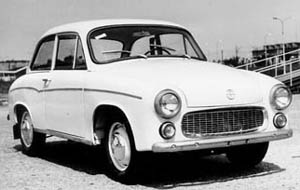 Syrena 105. 1972–83 (prod. 521,311). 2-door saloon. F/F, 842 cm³ (3 cyl. 2-str.). Syrena switches factories to FSM at Bielsko-Biała, though it was briefly at FSO in 1972 before the company switched to producing only its Fiat-licensed models. Suicide doors now replaced with conventional ones hinged at the front. Lux from 1974, but with the same 29 kW engine.
Syrena 105. 1972–83 (prod. 521,311). 2-door saloon. F/F, 842 cm³ (3 cyl. 2-str.). Syrena switches factories to FSM at Bielsko-Biała, though it was briefly at FSO in 1972 before the company switched to producing only its Fiat-licensed models. Suicide doors now replaced with conventional ones hinged at the front. Lux from 1974, but with the same 29 kW engine.
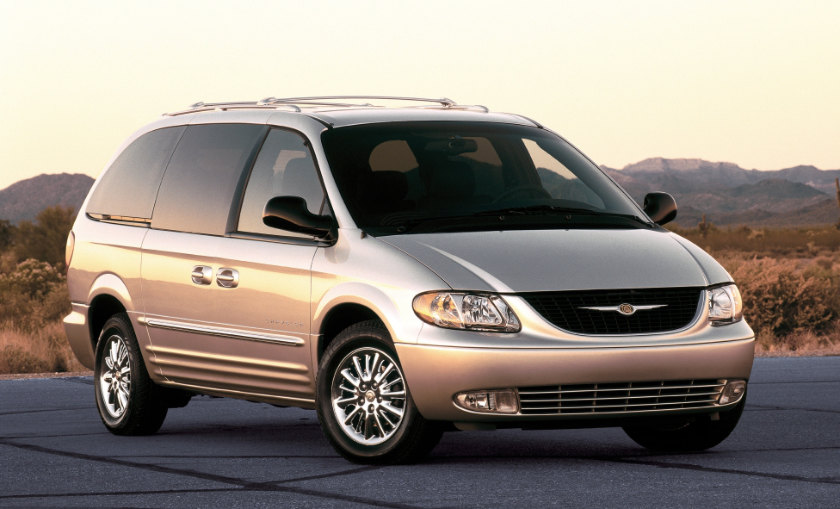

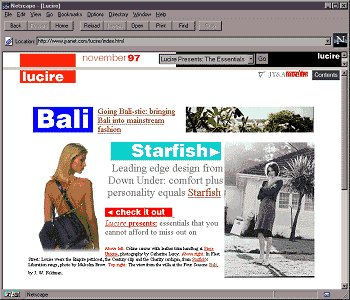
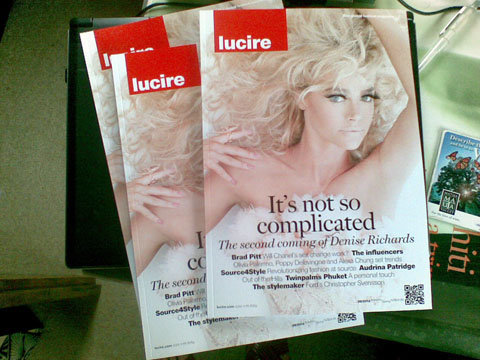
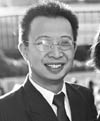



2 thoughts on “Autocade turns four, and it’s about to get its two millionth page view”